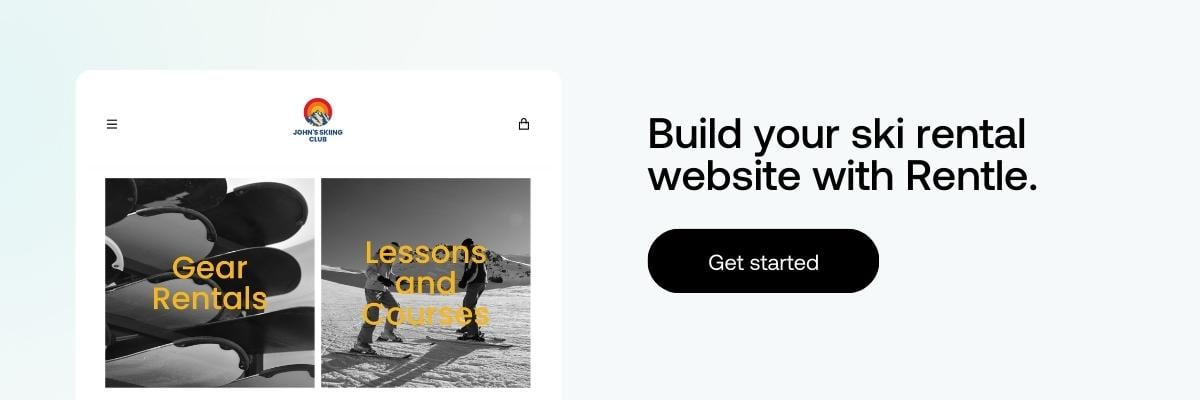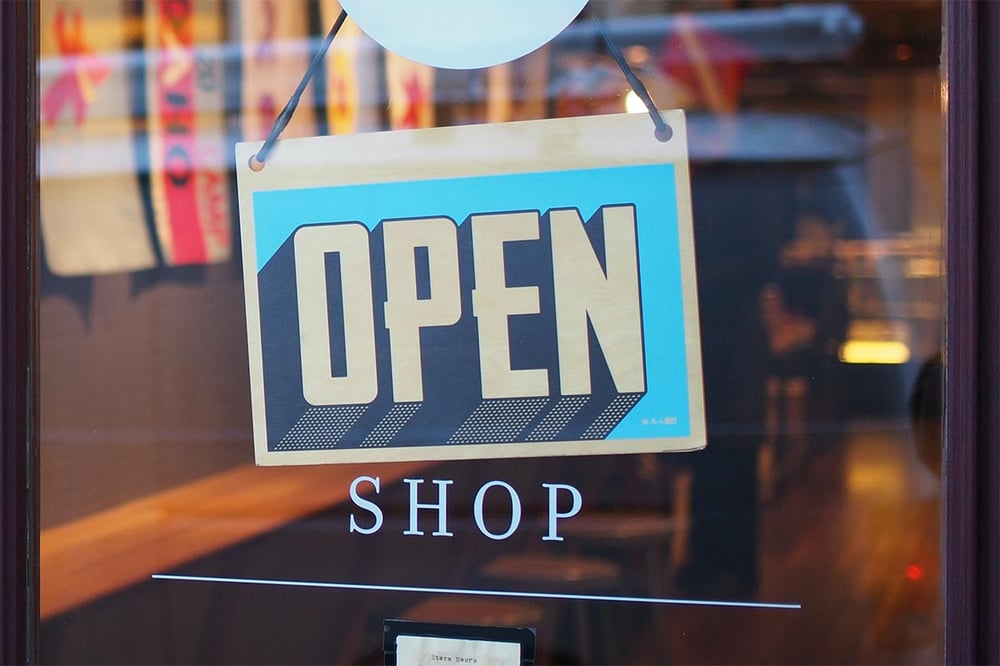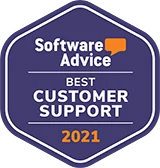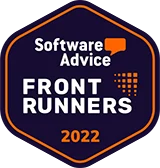Starting a ski rental business can be a great idea, especially if you're passionate about winter sports. If you're an experienced skier or just love the sport, this could be an excellent opportunity to be around your pastime while offering a service that brings people a lot of enjoyment.
Start with a business plan for a ski rental company
Before you plunge downhill at breakneck speed, you must make a business plan for your ski rental company. A business plan is a document that helps you turn your business idea into reality. That involves researching the market and your competitors and taking care of the financial and budgeting aspects.
For this guide, we sought advice on starting a ski rental business directly from an industry expert. We have Maria Bakke from RentSki sharing her experience on getting started and growing organically. RentSki is a small local ski shop based in Sweden. It was founded in 2018 and has since experienced significant growth year-over-year.
So, let's get into it.
Market research and competitor analysis
Market research and competitor analysis are crucial. Asking the right questions can go a long way toward determining the viability of your ski rental gear business and identifying opportunities you hadn’t considered initially.
Who is your target market?
Skiing is a niche market. However, it has a loyal audience. In the past, it was only beginners who used rented skis. These days, as the market has matured, even experienced skiers like to rent equipment.
Bakke confirms this trend: "We see more people renting the equipment, even if they're skilled. They might have their own boots but prefer to rent the skis to use new and fresh skis every time."
Defining your target audience is essential. It will dictate the type of equipment and additional services you can offer, as well as how and where you go to market. If you’ve been around the ski industry for a while, you’ll probably have a good idea of the consumers you can target. But even if you have that knowledge, it’s worth doing extra research.
Bakke advises visiting the ski resorts in your area and paying attention to the most typical customer profiles.
"It's super important to do good pre-work because you can, for example, buy the wrong equipment. Get out there, and see what kind of customers and guests visit the ski resorts in your area. For example, if you visit a restaurant in Branäs (the closest ski resort from RentSki), you can quickly see what kind of people there are."
Tourists will make up a large part of the target audience for your ski shop. Traveling with bulky equipment just isn't an option for everyone, which is where you can come in.
So look at the demand in your area. Do you operate near ski slopes? Are there enough visitors to provide revenue? If the answer is yes, you could be on to something.
Who are the main competitors in your area?
One of the most important pieces of research you can do is find out about the other ski rental businesses in your area.
Understanding your competitor’s ski rental gear business will give you some vital information.
Ask questions like:
-
Who are my main competitors?
-
What type of products or services do they offer?
-
What makes them unique?
-
What marketing channels do they use?
-
What prices do they charge?
-
How do their customers feel about them?
-
What are their overall strengths and weaknesses?
Once you answer these questions, a picture should start to emerge. You may be able to spot a gap in service or a weakness that will give you a competitive advantage. Find areas where you can offer extra value or something different, like price, equipment, or service.
When we asked Bakke what things to watch in your competition when starting a ski rental business, she highlighted similar points when doing your target audience analysis.
"Knowing your target group will be the foundation. If it is families, for example, think about what is essential for them. We thought it was the personal service and the price. Then we asked ourselves if that was enough to be our competitive advantage. In our case, the answer was yes because the competition is relatively easy here. So, know your customer and find out what you can add that is lacking."
To get a better understanding of skier demographics take a look at these interesting skiing market stats.
Budgeting and financial planning
How much does it cost to start a ski rental business?
A ski and snowboard rental business requires some starting capital. How much depends on various factors, like location, the type of services you offer, and your business's initial size and scope.
Let’s break down the typical costs and look at some ballpark figures.
Business formation expenses
Depending on the type of business you form, you’ll need to pay business formation fees. These vary from state to state but can be as low as $50.
Ski rental inventory
Your ski rental gear will be your most significant expense. How much you spend depends on what type of market you are catering to and how much inventory you start with.
Bakke says a start-up ski rental company can save considerable sums if you know what and how much to buy. It's easy to get greedy in the beginning and buy too much for your actual needs.
While it might be tempting to save money by buying cheaper equipment, it’s a false economy. You want durable equipment that can handle regular use's strain and wear and tear. While high-quality equipment will cost more in initial outlay, it will last longer and need less frequent repair.
"When we did the season's inventory, we spent a lot of time going through everything. The equipment we have had since 2018 will now have its fifth season, but they are still in excellent shape. But we are maintaining them with care after every rental."
Around $10,000 should get you enough inventory to start your business. Due to supply chain problems caused by COVID-19, the lead times for skis and snowboards can be very long. So place your equipment order at least six months before you open your doors to customers.
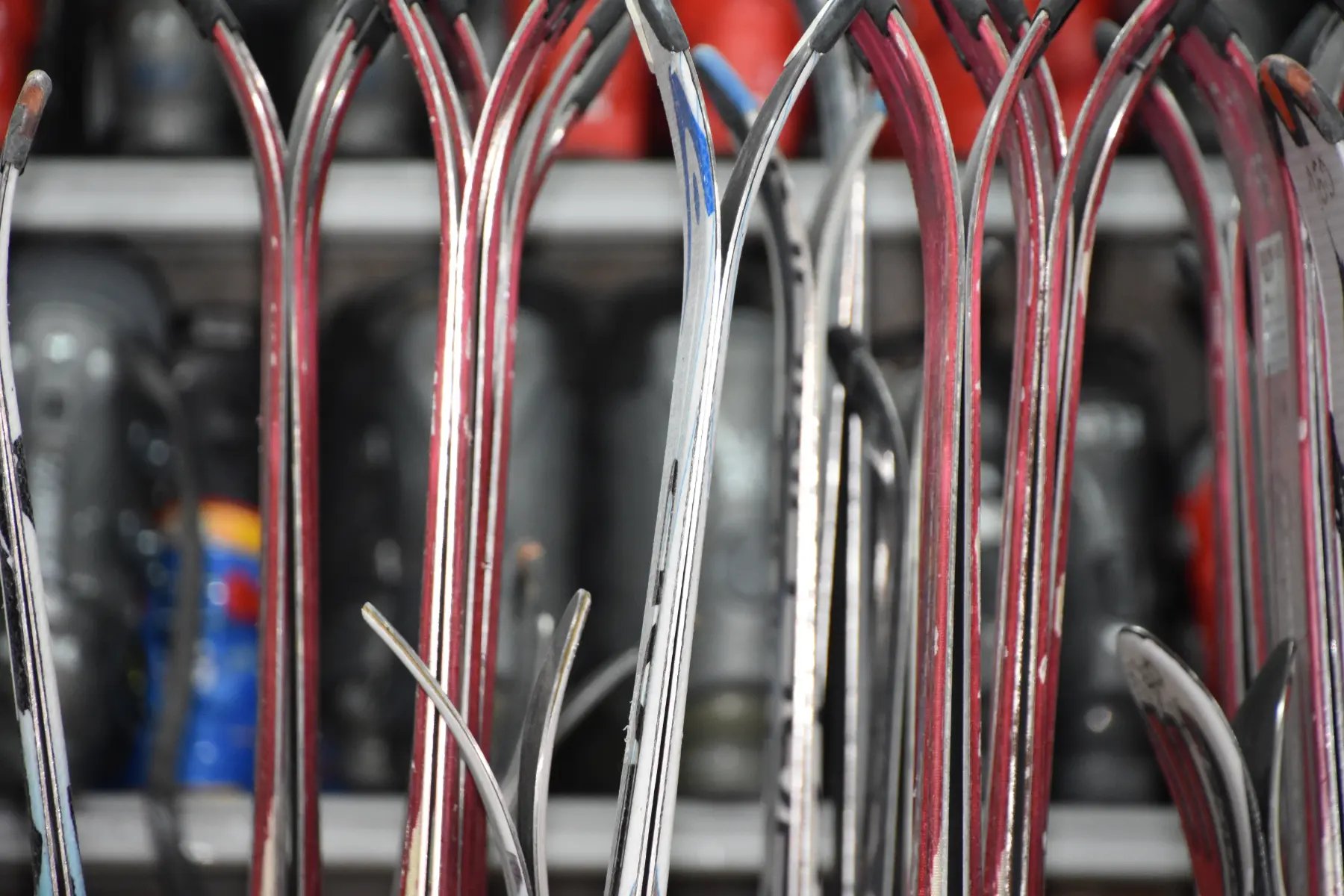
Equipment
You’ll also need to purchase other equipment, including cleaning materials, office supplies, a computer, and barcode scanners. You could consider investing in a ski service machine if you want to go full pro. While these machines are not cheap, they will help you save a considerable amount of time in the long run, and you can be sure that all your skis will always be serviced to the highest possible standard. The service machine also enables the offering of ski maintenance services for people's own equipment, which can add a significant additional revenue stream.
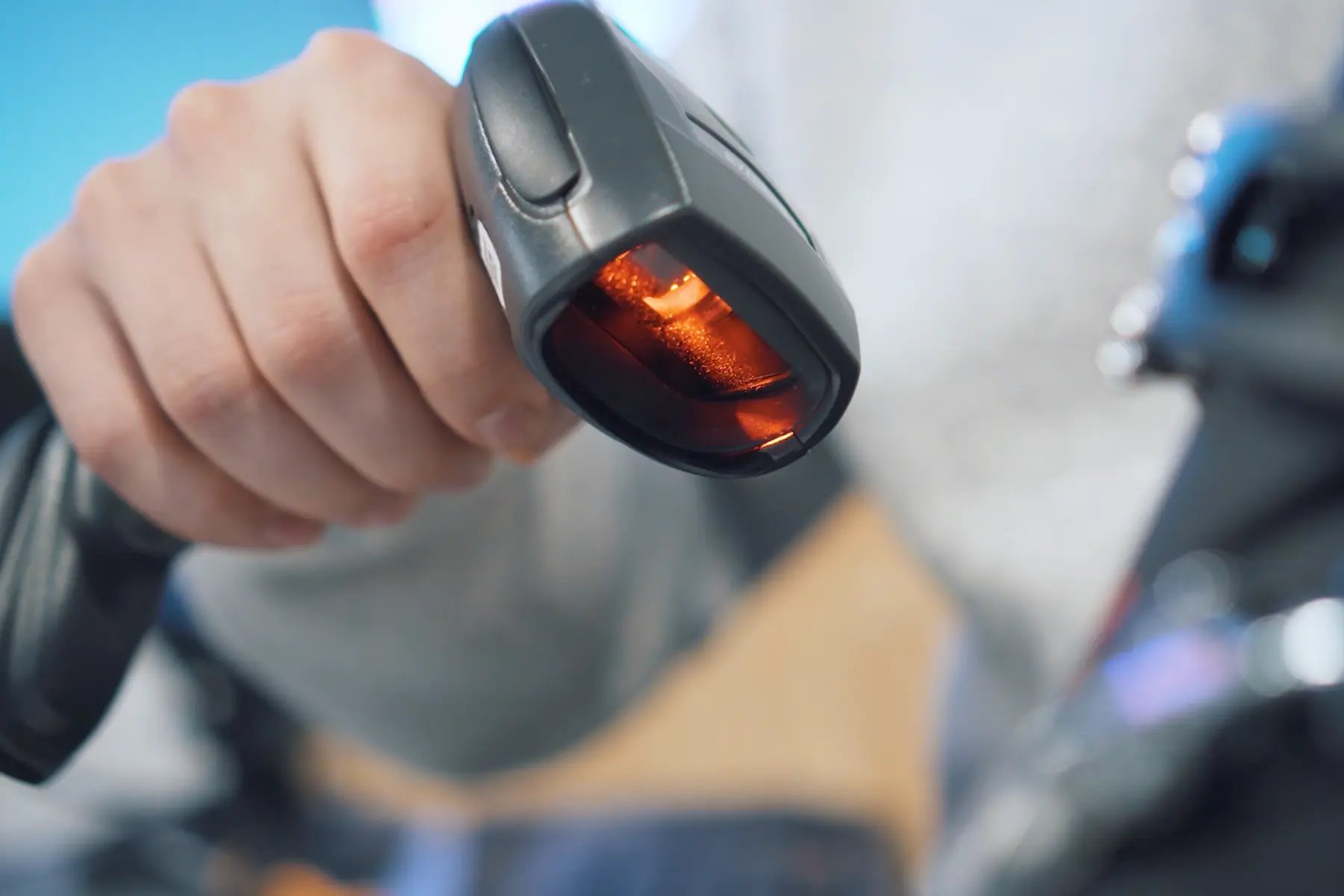
Software
Ski rental software is something that you'll need to think about too. While you don't necessarily need something built solely for ski rentals, it's essential to have enough flexibility to handle online bookings, process payments, and manage inventory.
We designed Twice to help businesses manage their rentals, inventory, and scheduling. Our platform can give you everything you need to get your rental company off the ground. In addition to ski rental software, you will need POS software to handle the sales in your store. Twice provides an increasing number of integrations to various POS software.
Website
You’ll also need a website to attract customers. You can build a basic website or pay for a slick and professional site. The cost can be between $50 and many thousands if you use outsourced professionals.
Alternatively, you can use Twice to build a rental website. The benefit of Twice is that you have one place to manage every area of your business, from handling online bookings and walk-in customers and managing inventory, payments, and more. You can connect Twice to a third-party website builder, or use Twice as a standalone site.
Business premises
There are a few ways you can go here.
-
You can have a traditional shop where customers can walk in and rent equipment.
-
You can run your entire store online and deliver goods to customers' homes and hotels or meet them at the slopes.
Either way, you’ll need somewhere to store your inventory. Ski and snowboarding gear is relatively bulky, so you’ll need a lot of storage space.
Bakke's advice is to go big: "Get as large store space as you can. Even if you're just starting and thinking you don’t need all the space. We are now trying to find ways to add more space in any way we can. It's always harder to find the optimal structure when expanding than having enough open space from the beginning."
Marketing
Attracting new customers is one of the most challenging parts of starting a new business. You need a good marketing strategy to reach your target audience. With enough research, you can learn where your prospective customers congregate and make sure they know about your business.
The best techniques depend on your location. Digital marketing, like pay-per-click ads, social media marketing, and search engine optimization (SEO), can all work together to increase your reach and brand awareness. As ski shops are almost always local businesses, traditional marketing tactics, such as roadside banners and display campaigns on public transport, will likely work well.
We'll cover more about marketing strategies later.
What are the ongoing expenses for a ski rental business?
There are a few ongoing expenses that you need to consider when you start a ski rental gear business.
Here are a few of the main outgoings you need to budget for.
-
Employee salaries
-
Employee insurance
-
Rent for your company premises
-
Utilities
-
Insurance
-
Equipment maintenance and repair materials
-
Transport (if you deliver your rental equipment)
How much can you charge your customers?
Again, this comes down to the type of equipment you rent. Depending on your location, you can charge more for high-end ski gear, but that market could be small.
Many ski rental companies offer complete skis, boots, and pole packages.
The average cost of this kind of package is $40 to $60 per day. Renting skis and boots on their own is typically priced relatively higher than packages, starting around $20 per day or higher based on quality.
Weekly packages and family deals are other services you can offer. Typically, these packages come at around $200 a week per adult and $100 for kids.
How profitable are ski rental businesses?
Buying in bulk allows you to buy skis at a reduced wholesale price. While a good set of skis can cost the consumer between $600 to $1500, you can get the price down to around $300 to $800 per item when you buy a lot at once.
If we take an average ski rental price of $20 per day, each item could pay for itself after a month or two of rentals, with the rest as pure profit. Maintain your inventory well, and it could keep generating revenue for years. Throw in other equipment like poles, jackets, goggles, etc., and you can take in a tidy profit.
What's more, once the individual ski equipment has been serving you and your customers long enough, many commercial operators will buy used skis and snowboards in bulk. Another option is to donate your used skiing gear to non-profits that lend equipment free of charge to those for whom skiing would otherwise be out of reach. It's a great way to support your local community, make skiing accessible for everyone, and increase the goodwill towards your business.
A ski gear rental business will be seasonal unless you live near indoor slopes or offer summer activities like bike or kayak rentals. December to April is considered the ski season, so you’ll need to do your business within five months or less, depending on the weather.
For more information on budgeting and accounting, you can read our guide to financial planning and budgeting for start-ups.
Find the right location
Location is an essential aspect for every business, but that's especially true for ski rental shops. Opening close to — or within — a local ski resort will give you a steady stream of potential customers. Similarly, opening close to busy shopping areas can provide you with enough foot traffic.
RentSki, however, has had a different approach. While they are not located right next to any ski resorts, they have a store strategically at the junction of two main roads through which all ski tourists pass.
Not only are they likely to have made significant savings in business premises costs, but they have also been able to turn their location to their advantage as ski resorts' rental shops are often claustrophobically crowded. Customer flows are much steadier further away, leaving time for personal service.
Define your services
While you can operate a business that purely rents out skis and snowboards, you might be leaving money on the table. There are a couple of other services you could consider to add new revenue streams to your business.
Ski and snowboard rentals
Ski and snowboard rentals are the core of your business. They will attract people to your store and will likely bring in the bulk of your revenue.
Of course, skis and snowboards are just the basics of what people need. They will also need boots and poles to ski, while jackets, pants, goggles, safety helmets, and gloves for an enjoyable day out on the slopes.
Stocking a diverse inventory will provide more opportunities to generate income. Ski holidays are a popular family activity, so a range of sizes will help you target a wider audience. It's also worth offering family packages and other bundles that can help to make it easier for your customers with different needs to choose the right equipment for them.
Skiing lessons
Another excellent revenue stream for you to consider is skiing lessons. Proper instructions are an essential part of a safe and enjoyable skiing experience. Offering this service can boost your rentals, as beginners typically need a ski gear source.
If you want to teach people to ski, you’ll need to hire qualified instructors.
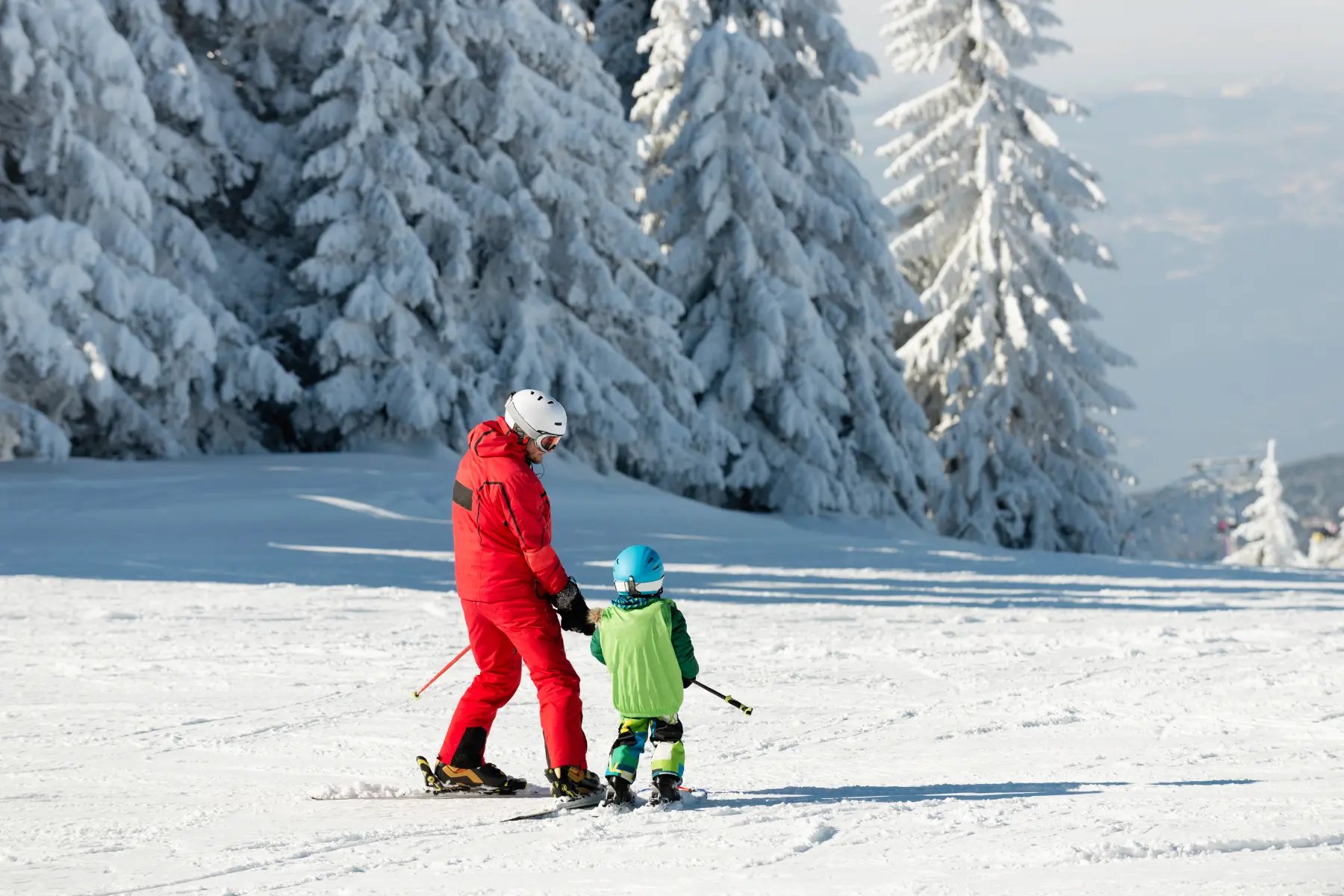
Ski tuning
If you offer ski rentals, tuning will be part of your maintenance schedule. Waxing skis and sharpening the edges of skis and snowboards will increase the longevity of your inventory.
If you have the skills to do this for your stock, you can also offer it as a service to help bring in extra money.
Other services
Other services you can consider include giving mountain tours, partnering with resorts to sell ski passes, or running corporate team-building days out. Be creative and explore ways to improve customer value and turnover.
Establish a legal entity for your business
Choose a name for your business
Coming up with the right business name is something you should spend some time on. You want something catchy and memorable that also communicates what your service is about.
A lot of this depends on which market you are targeting. You'll need a name that conveys those values to capture a high-end market. Similarly, if your offerings are built around capturing a low-cost or budget audience, find a business name that communicates this.
Form a business entity
Deciding on the legal structure of your business is an important step. It can have tax and liability consequences in case things go south.
Here are a few of the choices that you'll have.
Sole proprietorship: A sole proprietorship is the easiest business to form. This business structure doesn't draw a legal distinction between you and your business.
General partnership: Similar to a sole proprietorship, but allows having multiple business owners.
LLC: A limited liability company (LLC) is fairly easy to set up, but it can help you protect your assets because you and your business are considered separate legal entities.
Another advantage of an LLC is pass-through taxes. Simply put, it means you can pay the business taxes on your personal income tax.
C Corp: C Corp or C corporation is a bit more complex to set up. However, it makes it far easier to get outside investment from venture capitalists or other investors. Because you are issuing shares, there is a lot more compliance involved. Additionally, you and the business will pay taxes on income, in what is often referred to as double taxation.
Overall, we’d recommend an LLC because they
-
are straightforward to form and maintain
-
limit your liability
-
allow pass-through taxation.
Register for taxes
To file taxes, you'll need a tax ID. In the US, you can easily apply online via the IRS. In other countries, follow the instructions of your local tax authority.
Without an employer identification number (EIN), you won't be able to open a bank account for your business. So this is an important step.
Set up a business bank account
Using your personal account for your business is a terrible idea. For starters, if you blend your funds, you can lose your liability protection as an LLC.
A separate bank account for your business will also provide several other benefits. Building up credit as a business is essential if you want to raise capital or take out a business loan.
Necessary permits and licenses for ski rental businesses
First things first, if you want to operate legally, you'll need a business license. Other licensing requirements vary from state to state. So ensure you check the rules with local and state governments.
Buy business insurance
By law, the US federal government demands all small businesses with employees carry specific insurance types. These are:
-
disability insurance
-
unemployment insurance
-
workers' compensation insurance
Of course, Skiing at high speed down slopes comes with some risks. If accidents happen, your equipment and work policies will be scrutinized. As such, you should strongly consider the following:
-
Business liability insurance
-
Product liability insurance
For a more comprehensive look at the question, check out our article on how to choose the right insurance for outdoor adventure business.
Other policies you should think of
While insurance policies are essential, they’re not the only type of policies your ski rental gear business can benefit from. Here are some other contracts that you should consider to protect your business.
Service level agreement
A service level agreement, or SLA, is a contract that defines the minimum standards of service. They’re essentially an agreement between you and the clients that they can expect a service above a particular bar when they use your business.
Liability waiver
While you must ensure your equipment is safe and maintained, you can’t be responsible for what people do on the slopes. Asking your customers to sign a liability waiver will protect you from being sued for damages in the case of an accident.
Of course, these types of policies can’t insulate you from negligence.
Cancellation policy
A cancellation policy is an essential component of any modern rental business. If someone commits to hiring your rental equipment but pulls out late in the day, it can leave you out of pocket.
So consider a cancellation policy. Some popular implementations of a cancellation policy are things like:
-
Cancellation fees (fixed or percentage)
-
No cancellations within 24hrs of the booking date
Using Twice's security deposit feature is also great for charging cancellation fees.
Plan your daily operations
You’ve got your ski rental business plan, equipment, premises, and all the legal and administrative elements worked out; now it’s time to plan how you’ll operate on a day-to-day basis.
Managing customer flows
If your ski rental business is busy — and let’s hope it is — that will present you with a good problem: how to manage your customer flows.
You want to work out a smooth procedure so that you can get everything in and out in an orderly fashion.
Check-in
You can schedule visits and prepare ahead if you have an online store. However, if walk-ins make up a large portion of your revenue, you need to be able to accommodate them.
You need a check-in system to take details for your customers and record what items they are renting. Additionally, this is the time to sign waivers.
Twice's Advance plan includes a check-in kiosk program that you can set up on, for example, any tablet. This has multiplied the customer service capacity of many of our ski rental clients and significantly reduced queues.
Boot fitting
Boot fitting is a crucial part of safe skiing. You’ll need to account for time to make sure your clients have appropriately fitting footwear. Typically you want to direct customers from the check-in to try on boots before asking them to pick up their skis.
Adjusting ski & snowboard bindings
The correct DIN settings are an essential aspect of renting ski equipment.
Safe DIN settings depend on factors like:
-
Height
-
Weight
-
Boot size/sole length
-
Age
-
Skiing experience and ability
So, to ensure you provide a safe experience for your clients, you’ll need to adjust their ski & snowboard bindings inside the shop. Twice calculates skiers' DINs automatically based on the parameters mentioned above.
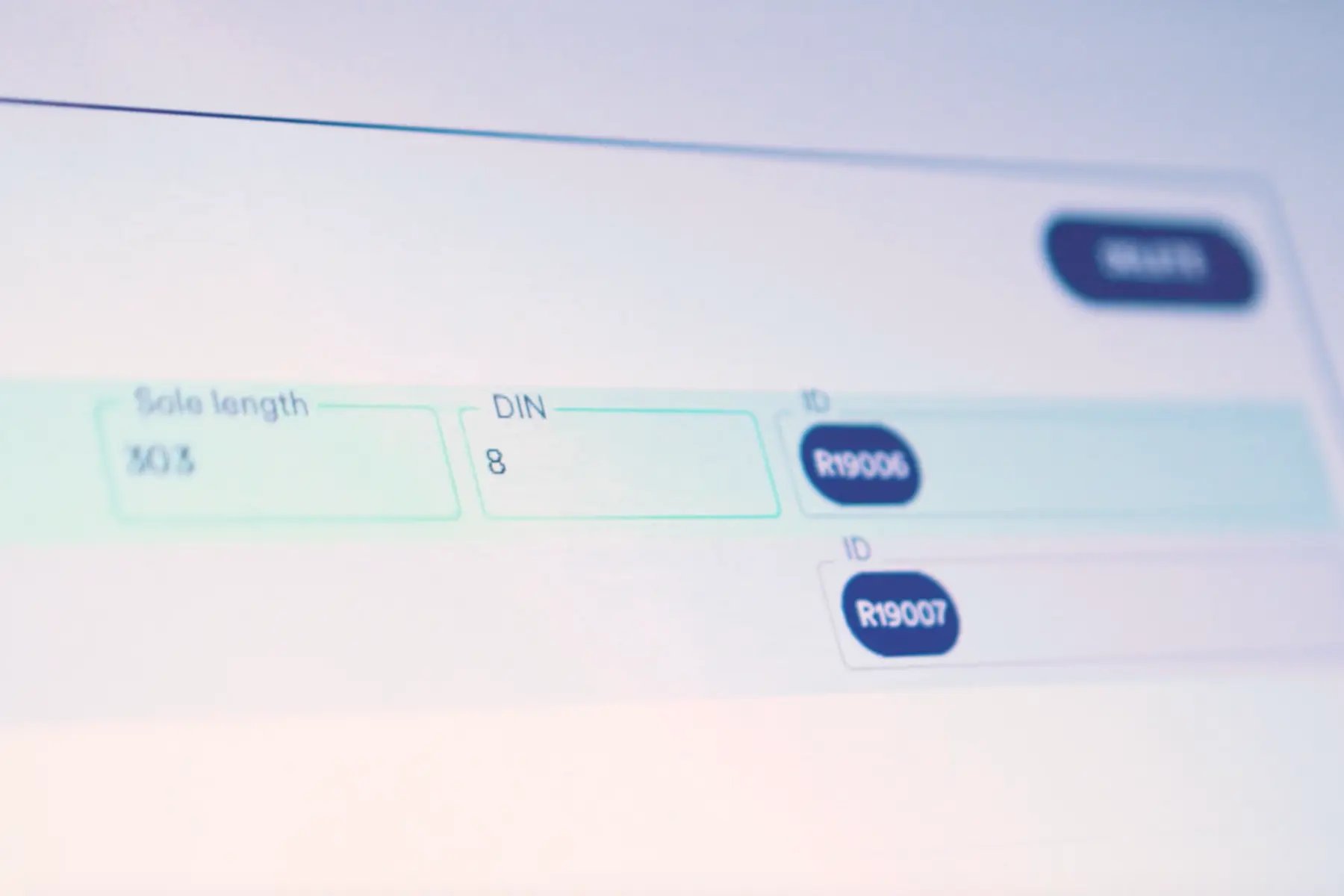
Returns
The final part of the customer cycle involves the return of your items. Again, you’ll need to ensure you have a system that logs the return and checks for damages.
Ski equipment maintenance
Establishing a ski equipment maintenance schedule will help ensure your gear is pleasant and safe to use. Do a quick check after each rental and service your equipment as needed. Basic maintenance of skis and boards should be done after each rental and if you find any other problems, fix them as necessary. Remember to set aside time once or twice a season to run checks over all your inventory to ensure your customers can rely on your equipment.
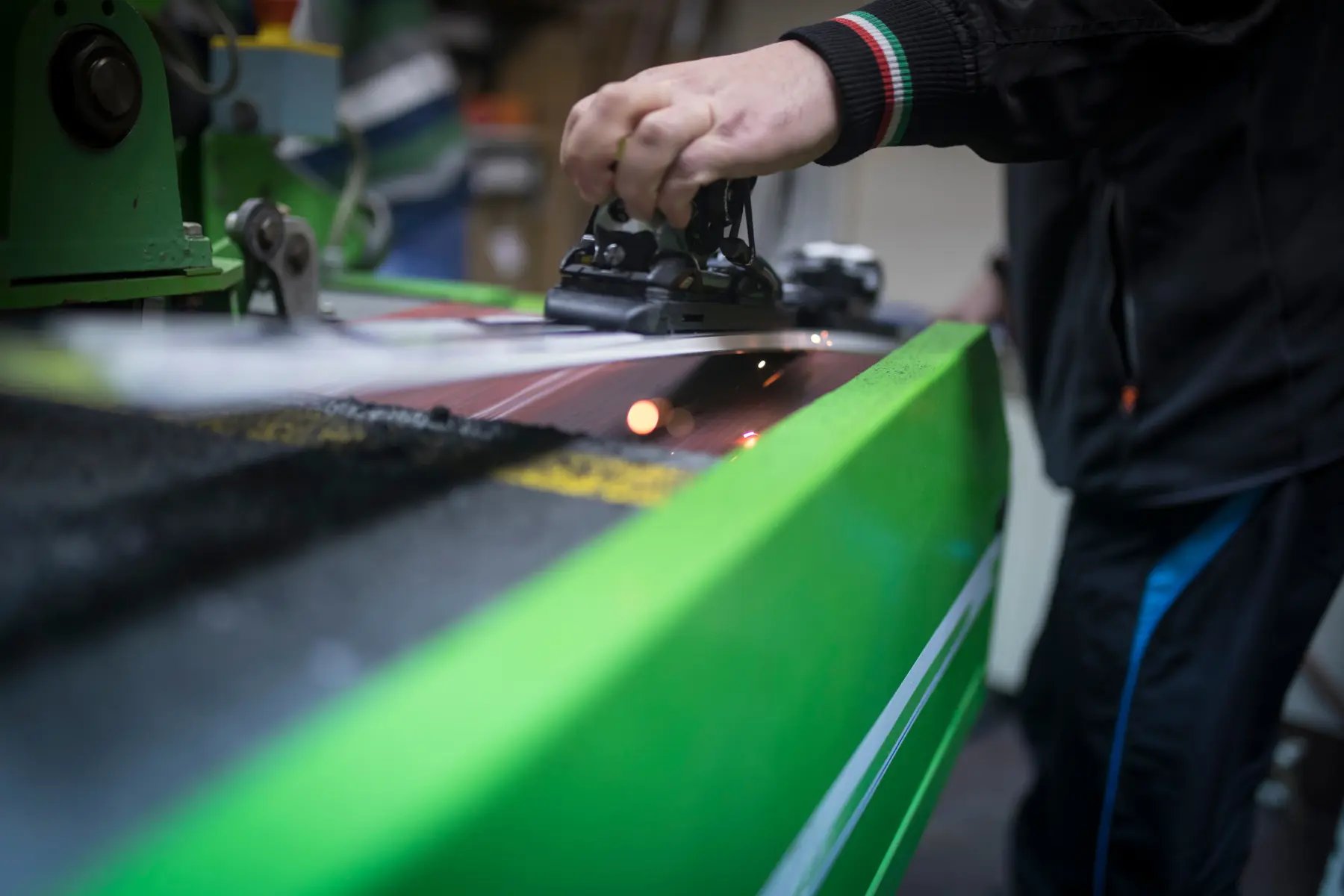
Managing online reservations
Online reservations are a core part of running any rental business. How people research and shop has changed dramatically in recent years, so you need a way to meet that demand.
Bakke says that 90% of RentSki's bookings come online.
"While the industry is still very traditional, it's moving towards e-commerce and online booking. While different generations have mixed opinions about online bookings, it's what the customer wants. They want to want to have the right kind of equipment readily prepared when they arrive."
But the benefits aren't limited to better customer experience. Online bookings give you better visibility into the future and help you prepare equipment in advance, so you're able to serve customers faster and work more efficiently.
Twice keeps all your online and in-store bookings synchronized in one system. Therefore, your online store always has the right amount of equipment available, and you can avoid overbooking.
Managing rental inventory
Ski equipment is expensive. There's no way around that.
You need to protect your stock and know where it is at all times and who is responsible for it. Moreover, practicing good inventory management helps you keep an eye on stock levels and ensure your customers know what’s available.
You can read our introduction to rental inventory management to get up to speed on the best practices.
Start marketing your business to attract customers
Create a website
A professional-looking website is a massive part of marketing and helping people to find you.
Building a rental website may seem like a daunting task, but it's actually pretty simple if you have the right tools and understand the basics.
Start by designing your website structure and defining the pages of your website. Then you can move on to creating the content of the pages like writing product descriptions and adding product images.
Use digital marketing to your advantage
While traditional marketing materials are often very effective, digital channels offer far more reach. Pay-per-click ads are a great way to get the word out, with Google Ads and Meta Ads being two of the most popular platforms.
Social media marketing and local SEO can be effective ways to reach prospective customers for something more organic and less costly. However, while there are no direct costs related to social media marketing and doing SEO, gaining long-term results takes a lot of systematic work. One good idea is to set up and optimize your Google Business Profile.
In addition, email marketing is an excellent channel to reach your previous customers cost-effectively. Bakke says RentSki tried email marketing for the first time this year and says they received their first booking half an hour after the first newsletter was sent out.
For a deeper dive into the different forms of digital marketing that you can use for your business, check out our comprehensive article, 12 digital marketing strategies you need to know.
Don't overlook traditional marketing tactics
Traditional marketing tactics can be very effective in increasing your sales. For example, roadside ads have worked very well for RentSki and increased the number of walk-in customers.
In addition, display advertising on public transport is sure to reach a lot of relevant consumers who are wondering where they can easily rent equipment for their skiing holiday. When evaluating the most effective marketing channels, customer understanding is at the heart of everything.
Look for partnerships
Finding partnerships with hotels and ski resorts is an excellent strategy. While it will mean cutting your revenue, these alliances can provide you with a steady stream of tourists who need rental equipment for the slopes.
Other partnerships that you can explore are working directly with ski holiday travel agents. These kinds of contacts can be very profitable.
Join regional directories
There are many other ways to get the word out about your ski rental business. Joining regional directories is a smart way to market your business. While it might not bring in a massive amount of traffic, it does provide your website with backlinks, which can improve your SEO
Conclusion
A ski and snowboard rental business is a great way to make money from something you love. It’s a sustainable business that serves the important function of making skiing accessible to more people.
Choose the right location, buy durable inventory, and provide a reliable and friendly service, and you could be running a successful business in no time. While global warming poses concerns for the ski industry, the rental space is thriving right now, so it could be the right time to strike.


